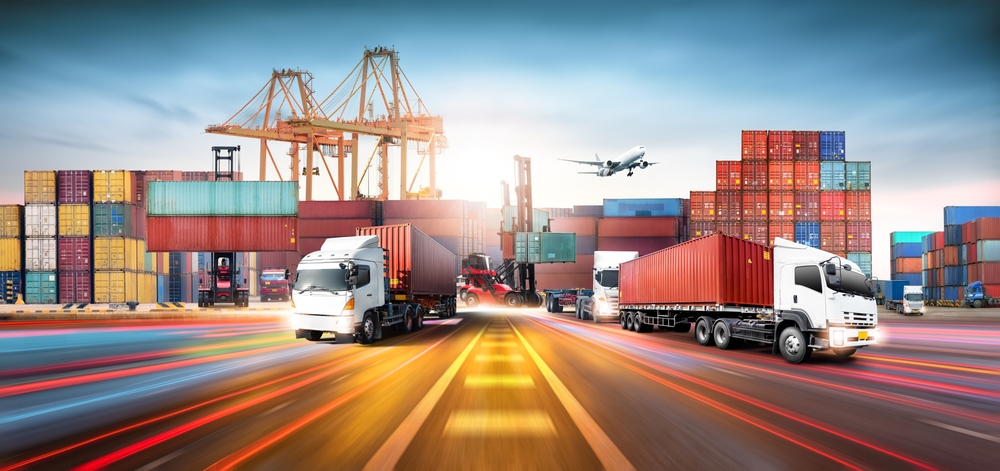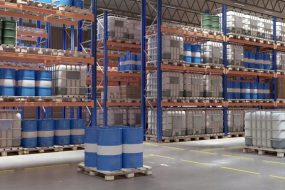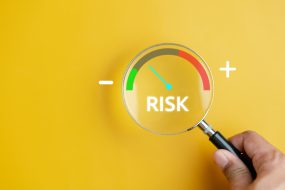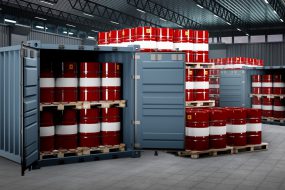The chemical supply chain isn’t just complicated – it’s basically a high-stakes game of Jenga. One wrong move, and things can topple fast. Whether you’re managing hazardous materials, juggling regulations, or trying to keep costs down, there’s a lot that can go sideways.
But chemical logistics doesn’t have to be a logistical nightmare. In fact, some of the most successful chemical logistics companies are finding smarter, safer, and more sustainable ways to move goods without the drama.
In this post, we’re breaking down what really trips companies up – and how to avoid those expensive errors before they happen.
Related Reading: Rethinking risk: New strategies for hazardous shipping
1. Don’t Play Fast and Loose with Regulations
When you’re dealing with chemicals, there’s no cutting corners. Regulations are there for a reason, and they’re not just red tape. From how you store substances to how you transport and dispose of them, the rules are strict because the risks are real.
Chemical logistics companies that skip proper compliance can face massive fines, lawsuits, or worse, safety disasters. So, make sure your teams are clued up on every regulation that applies locally, nationally, and globally. No guesswork allowed.
Pro tip: Build regular compliance checks into your operations and make sure your partners take regulations as seriously as you do.
2. The Chemical Supply Chain Is a Beast – Tame It
You already know that the chemical industry supply chain is one of the trickiest out there. You’ve got raw materials, manufacturers, distributors, and end customers, and each link in the chain has its own quirks.
Mistakes tend to happen when companies treat the supply chain as one giant lump instead of a series of very specific, moving parts. Want fewer disruptions and more control? Understand each step and how they connect. That’s where the magic happens.
Related Reading: 5 rules for shipping dangerous goods the right way
3. Let Tech Do the Heavy Lifting
This is 2025 – we’ve got the tools. Why are we still relying on spreadsheets and crossed fingers?
Smart chemical logistics companies are leaning into tech to do everything from tracking shipments in real time to detecting potential risks before they become problems. Think blockchain for traceability. IoT sensors for monitoring temperature or leaks. AI for predicting bottlenecks.
Even automation – from robotic warehousing to self-optimising inventory systems – is changing the game.
Of course, it’s not just about buying shiny new software. You’ve got to integrate tech properly into your existing operations. But once you do? You’ll wonder how you ever managed without it.
Related Reading: Advanced tracking systems: your solution for safe hazardous materials transport
4. Rethink Your Business Model (Yes, Really)
We know – “strategic business models” sounds like something a consultant says right before they hand you a massive invoice. But in chemical logistics, a small shift in how you operate can lead to big savings (and fewer headaches).
One approach gaining serious traction is the circular economy – designing your logistics process to reuse, recycle, and reduce waste wherever possible. It’s great for the planet and your profit margins.
Another smart move? Multimodal transport. Instead of relying solely on trucks or planes, mix it up with rail and sea where it makes sense. It’s often cheaper, more sustainable, and more flexible. The trick is planning transitions between modes so that nothing gets lost in the shuffle.


5. Collaboration Isn’t Just a Buzzword
Here’s the thing: you can’t run an efficient chemical supply chain in a vacuum. You need strong, reliable partnerships across every touchpoint – suppliers, freight forwarders, warehousing, customs, and customers.
Trust matters. Communication matters. And so does shared knowledge. Regular training and info-sharing between partners helps everyone stay on top of new regulations, technologies, and best practices.
If you want fewer surprises and more resilience in your supply chain, start by building relationships that go beyond just transactions.
Related Reading: Essential risk management strategies for logistics in the chemical industry
Key Takeaway: A Little Foresight Goes A Long Way
Chemical logistics is tricky, but it doesn’t have to be a minefield. The most successful chemical logistics companies are the ones that combine deep supply chain knowledge with the right tech, the right partners, and the right mindset.
Want to avoid expensive mistakes? Start by getting serious about compliance, investing in smart tools, rethinking your transport strategies, and building strong relationships across the supply chain.
Want to find out how we can help streamline your chemical supply chain and avoid costly logistics slip-ups? Start here.




